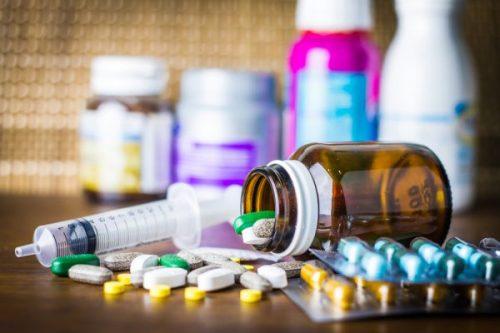Ever wondered what really goes on behind the gleaming doors of the pharmaceutical industry? While these companies promise groundbreaking medicines and life-saving treatments, there’s a darker side lurking beneath the surface. In this article, we’re diving deep into the shadowy world of price fixing and kickback scams — practices that inflate drug costs and undermine trust. Join me as we uncover how these schemes work, who’s involved, and what it means for patients and the healthcare system at large. Get ready for an eye-opening journey inside pharma!
Table of Contents
- The Hidden Mechanisms Behind Pharma Price Fixing
- How Kickback Scams Manipulate Healthcare Providers and Patients
- Unveiling the Impact on Drug Costs and Public Trust
- Strategies and Solutions to Combat Pharma Corruption
- Insights and Conclusions
The Hidden Mechanisms Behind Pharma Price Fixing
Behind the shiny veneer of pharmaceutical giants lies a shadowy network where pricing isn’t set by market fairness but by clandestine agreements. These companies often engage in covert collaborations, manipulating the cost of essential medications through secret meetings, encrypted communications, and legally ambiguous arrangements. What’s fascinating—and troubling—is how these sophisticated tactics consistently evade regulatory scrutiny, enabled by complex supply chains and a sophisticated understanding of legal loopholes.
Key strategies fueling this hidden system include:
- Mutual price signaling: Firms use indirect cues such as public statements or selective discounts to align prices without explicit discussions.
- Market allocation: Competitors divide territories or patient groups, avoiding direct competition that could trigger price wars.
- Kickback schemes: Under-the-table incentives flow to doctors and hospitals, guaranteeing prescription loyalty and perpetuating inflated pricing.
Exploring these covert mechanisms reveals a web of strategic deceit designed not only to maximize profits but to make inflated prices appear as normal industry practices. Moreover, these hidden machinations exploit systemic vulnerabilities, allowing price fixing to thrive quietly beneath public scrutiny.
How Kickback Scams Manipulate Healthcare Providers and Patients
Behind the scenes of pharmaceutical transactions, a shadowy practice thrives: inducements designed to sway healthcare decisions. These under-the-table incentives, ranging from lavish gifts to undisclosed financial rewards, aren’t merely perks; they are strategic tools used to influence prescribing behaviors and steer patients toward specific drugs or treatments. Often, healthcare providers find themselves caught in a web of conflicting interests, where ethical boundaries blur, and patient care becomes secondary to profit margins. This hidden dance distorts medical judgment and skews formularies, ultimately inflating costs for everyone involved.
Patients, the supposed beneficiaries of healthcare, frequently become unknowing pawns in this scheme. Their trust is leveraged as providers, incentivized by kickbacks, may recommend expensive medications or unnecessary procedures that offer minimal benefit but substantially increase pharmaceutical sales. The ripple effects are profound:
- Higher out-of-pocket expenses without tangible improvements in care.
- Limited access to affordable generics due to preferred drug promotions.
- Increased overall burden on the healthcare system that trickles down to insurance premiums and taxes.
In essence, kickback scams create a distorted ecosystem that rewards financial gain over genuine health outcomes, challenging the integrity of healthcare as a whole.
Unveiling the Impact on Drug Costs and Public Trust
When pharmaceutical giants collude to manipulate prices, the fallout extends far beyond inflated bills at the pharmacy counter. Consumers often bear the brunt as healthcare costs surge unpredictably, making life-saving medications inaccessible to many. The hidden hands orchestrating these schemes not only distort market fairness but also strain public healthcare systems that rely heavily on these drugs. The ripple effect touches insurance premiums, government subsidies, and ultimately, taxpayer money—turning private profit games into shared financial burdens.
Public trust in the pharmaceutical industry suffers immeasurably from these secretive dealings. Patients start questioning the intentions behind drug pricing, wondering if their treatment is driven by care or cash. Transparency becomes a rare commodity, while skepticism takes center stage. This erosion of confidence triggers broader concerns about regulatory loopholes and the ethical compass guiding pharmaceutical companies. The challenge now is clear: how can the industry reclaim its credibility and ensure that innovation and profit go hand in hand with fairness and integrity?
- Increased out-of-pocket expenses for patients requiring essential medications
- Heightened scrutiny from regulatory bodies and lawmakers demanding accountability
- Calls for stricter reforms aimed at preventing future collusion and kickback schemes
- Growing advocacy for transparent pricing models and ethical corporate behavior
Strategies and Solutions to Combat Pharma Corruption
Addressing corruption within the pharmaceutical industry requires a multifaceted approach that targets its very roots. Transparent pricing models are essential to dismantling opaque frameworks that enable price fixing. By mandating the public disclosure of production costs, R&D expenses, and markup percentages, regulators and watchdogs can more effectively hold corporations accountable. Additionally, implementing stricter whistleblower protections encourages insiders to come forward without fear of retaliation, creating an environment where illicit activities become increasingly difficult to conceal.
Equally critical is the enforcement of robust compliance programs that combine technology with ethical training. Leveraging AI-powered monitoring tools can detect suspicious patterns in payments and pricing, flagging potential kickbacks or collusion schemes before they escalate. Meanwhile, fostering a corporate culture that emphasizes integrity over profits redefines success metrics within pharma companies. Some proactive measures include:
- Regular third-party audits focusing specifically on financial transactions and contract negotiations
- Legislative reforms that impose harsher penalties on entities engaged in corrupt practices
- Collaboration between international agencies to track cross-border pharmaceutical fraud
Insights and Conclusions
As we peel back the layers of the pharmaceutical industry, the intricate web of price fixing and kickback schemes reveals just how complex—and concerning—the world of medicine pricing can be. While it’s easy to feel overwhelmed or even powerless in the face of such elaborate scams, staying informed is the first step toward demanding transparency and accountability. Keep questioning, keep digging, and who knows what other hidden corners of “Inside Pharma” we’ll uncover next? The story is far from over—and that’s exactly why it matters.












